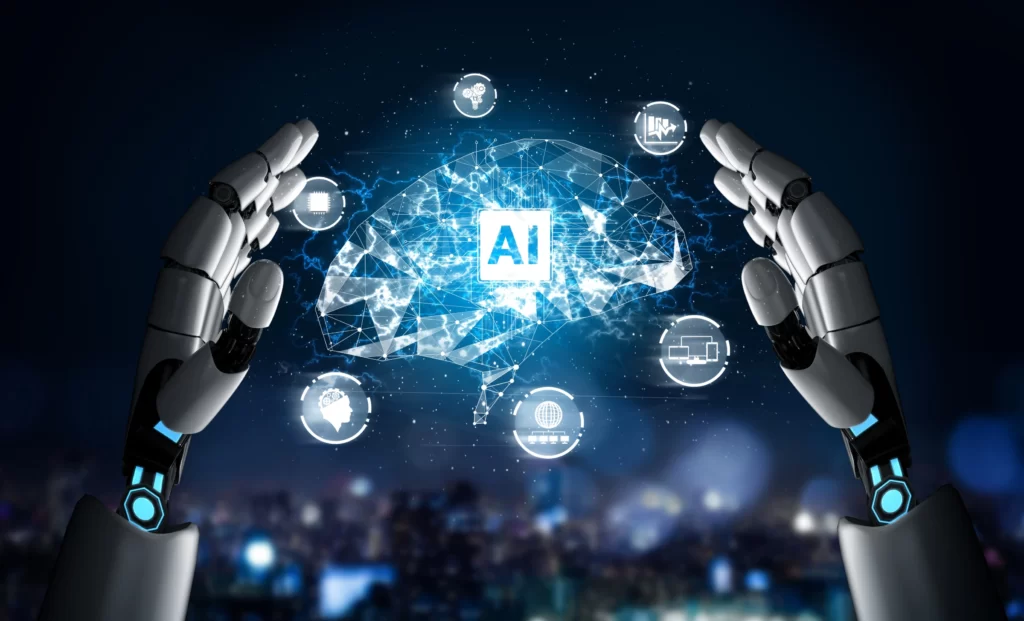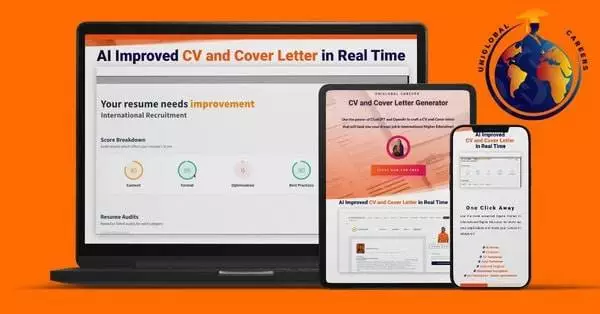In today’s fast-paced world, technology plays a crucial role in every industry, including education. One of the most talked-about technological advancements in recent years is Artificial Intelligence (AI). AI has the potential to revolutionize education, making it more efficient, personalized, and engaging for students. If you want to impress your boss and stay ahead of the curve, understanding how to use AI in international education is essential.
Understanding the Role of AI in International Education
AI has come a long way in education. Initially, it was used primarily in research and data analysis. However, with advancements in machine learning and natural language processing, AI has evolved to become a powerful tool for improving teaching and learning practices. Understanding this evolution is crucial to grasp why AI has such a significant impact on international education.
The Evolution of AI in Education
In the early stages, AI was used to develop intelligent tutoring systems that provided personalized feedback to students. These systems analyzed students’ learning patterns and adapted the content accordingly. Over time, AI has progressed to offer virtual reality experiences, voice-activated assistants, and chatbots that can answer students’ queries and provide guidance.
Virtual reality experiences powered by AI have revolutionized the way students learn. Imagine a student in a remote village in a developing country, having the opportunity to explore ancient civilizations through virtual reality. AI algorithms can create immersive experiences that transport students to different time periods, allowing them to witness historical events firsthand. This not only makes learning more engaging but also provides a global perspective that enhances their understanding of international education.
Voice-activated assistants have also become an integral part of AI in education. These assistants, such as Amazon’s Alexa or Apple’s Siri, can help students with their homework, provide explanations for complex concepts, and even engage in interactive conversations. With the help of AI-powered voice assistants, students can have personalized learning experiences tailored to their individual needs and preferences.
The Impact of AI on International Education
The impact of AI in international education is immense. With AI-powered platforms, international students can have access to personalized language learning programs that adapt to their proficiency levels. These programs leverage AI algorithms to analyze the students’ language skills and provide targeted exercises and activities to improve their fluency.
Furthermore, AI algorithms can analyze student data to identify areas of improvement, allowing educators to provide targeted support. For instance, if the data shows that a group of international students is struggling with a specific concept, the AI system can generate additional resources, such as interactive tutorials or practice quizzes, to help them overcome their difficulties. This personalized approach ensures that international students receive the support they need to succeed in their education.
Additionally, AI-powered platforms can facilitate cross-cultural communication and collaboration among international students. Through virtual classrooms and online discussion forums, students from different countries can connect and engage in meaningful discussions, breaking down geographical barriers and fostering a global community of learners.
In conclusion, A.I has transformed the landscape of international education. From intelligent tutoring systems to virtual reality experiences and personalized language learning programs, AI has revolutionized the way students learn and educators teach. By harnessing the power of AI, international education can become more accessible, engaging, and tailored to the needs of every student, regardless of their location or background.
Practical Ways to Implement AI in Your Educational Institution
Now that you understand the role of AI in international education, it’s time to explore practical ways to implement it in your educational institution. Whether you work in a K-12 school or a higher education institution, AI can enhance both academic and administrative processes.
Incorporating AI into the Classroom
In the classroom, AI can be used to create personalized learning experiences. Intelligent tutoring systems can provide students with individualized feedback, ensuring their learning needs are met. For example, an AI-powered language learning platform can adapt its lessons and exercises based on the student’s proficiency level and learning pace. This allows students to progress at their own speed and receive targeted support where they need it most.
Virtual reality can also be integrated into the classroom to enhance students’ global perspective. By using AI-powered virtual reality simulations, students can explore historical sites, cultural landmarks, and scientific phenomena from around the world. For instance, students studying ancient civilizations can virtually visit the pyramids of Egypt or the Great Wall of China, immersing themselves in the rich history and culture of these regions.
Furthermore, AI monitoring systems can play a crucial role in identifying early signs of student disengagement. By analyzing various data points such as attendance, participation, and academic performance, these systems can alert educators to students who may be at risk of falling behind. This proactive approach allows educators to intervene and provide the necessary support to re-engage these students before their academic progress is compromised.
Utilizing AI for Administrative Tasks
AI can also streamline administrative tasks, saving time and resources. Chatbots, for instance, can handle routine inquiries from students, such as questions about enrollment, course schedules, or campus facilities. By automating these processes, administrative personnel can focus on more complex tasks that require human expertise, such as student counseling, curriculum development, or strategic planning.
Moreover, AI algorithms can analyze vast amounts of data to identify patterns and trends, enabling administrators to make data-driven decisions and optimize operations. For example, by analyzing student enrollment data, AI can help predict future enrollment trends, allowing institutions to allocate resources effectively and plan for future growth. Additionally, AI-powered analytics can help identify areas where the curriculum may need improvement or where additional support may be required for specific student populations.
In conclusion, the implementation of AI in educational institutions offers numerous benefits. By incorporating AI into the classroom, educators can provide personalized learning experiences and monitor student engagement effectively. Simultaneously, utilizing AI for administrative tasks can streamline operations and enable data-driven decision-making. As technology continues to advance, it is crucial for educational institutions to embrace AI as a tool for enhancing teaching, learning, and overall efficiency.
The Benefits of Using AI in Education
Implementing AI in education comes with several benefits that can impress your boss. Not only does it enhance the learning experience for students, but it also improves operational efficiency, thereby reducing costs.

Enhancing Student Learning Experience with AI
AI-powered platforms provide personalized feedback and adaptive learning experiences, which foster student engagement and achievement. With AI, students can receive immediate feedback on their assignments and assessments, enabling them to make progress in real-time. This personalized feedback helps students identify their strengths and weaknesses, allowing them to focus on areas that need improvement.
Furthermore, AI algorithms can analyze vast amounts of educational content to recommend relevant resources. This means that students can access a wide range of supplementary materials, such as articles, videos, and interactive exercises, that are tailored to their individual needs and learning styles. By providing students with these additional resources, AI enhances the learning experience by offering a variety of learning materials that cater to different preferences and abilities.
In addition to personalized feedback and resource recommendations, AI-powered platforms can also facilitate collaborative learning. Through features such as virtual classrooms and online discussion forums, students can engage in meaningful discussions and group projects, regardless of their physical location. This promotes active learning and peer-to-peer interaction, fostering a sense of community and collaboration among students.
Streamlining Operations and Reducing Costs
By automating administrative tasks, institutions can save valuable time and resources. AI-powered systems can handle repetitive tasks such as grading assignments, generating reports, and managing student data. This not only frees up educators and administrators to focus more on strategic initiatives and personalized interventions but also reduces the risk of human error that can occur during manual data entry or grading.
In addition to automating administrative tasks, AI can also assist in the development of personalized learning plans for students. By analyzing data on student performance, engagement, and preferences, AI algorithms can generate individualized learning paths that cater to each student’s unique needs and goals. This level of personalization helps students stay motivated and engaged, as they can see their progress and achievements in real-time.
Furthermore, AI can assist in identifying at-risk students who may require additional support. By analyzing various data points, such as attendance, grades, and engagement, AI algorithms can flag students who may be struggling academically or emotionally. This early intervention allows educators to provide timely support and guidance, ultimately improving student outcomes and reducing the risk of dropout.
In conclusion, the benefits of using AI in education are vast and far-reaching. From enhancing the learning experience for students through personalized feedback and resource recommendations to streamlining operations and reducing costs through automation and data analysis, AI has the potential to revolutionize the education sector. By embracing AI technologies, institutions can create a more inclusive, efficient, and effective learning environment that prepares students for success in the digital age.
Case Studies of Successful AI Implementation in Education
Seeing real-life examples of successful AI implementation can help convince your boss about its potential in international education. Let’s explore two case studies that highlight the positive impact of AI in both higher education and K-12 schools.

AI in Higher Education: A Global Perspective
Institutions like Stanford University have successfully tapped into the power of AI to enhance their educational offerings. For instance, Stanford’s Open Learning Initiative combines AI with data analytics to create personalized learning experiences for students.
Through the use of sophisticated algorithms, the Open Learning Initiative analyzes students’ performance and engagement data, allowing the platform to adapt resources and assessments to suit individual needs. This personalized approach has proven to be highly effective, resulting in improved student outcomes and a deeper understanding of the subject matter.
Furthermore, AI in higher education has also revolutionized the way students interact with course materials. Virtual assistants powered by AI technology are now being used to provide instant feedback and guidance, helping students navigate complex concepts and overcome challenges in real-time.
By leveraging AI, universities and colleges are able to provide a more inclusive and accessible learning environment. For students with disabilities, AI-powered tools can transcribe lectures, convert text to speech, and even offer real-time language translation, ensuring that every student has equal access to educational resources.
Innovative AI Applications in K-12 Schools
The Carrollton-Farmers Branch Independent School District in Texas implemented an AI-based system to improve reading comprehension. The AI program, known as Achieve3000, assesses students’ reading levels and provides customized non-fiction articles at their individual reading proficiency.
Through the use of natural language processing algorithms, Achieve3000 is able to analyze students’ reading abilities and provide tailored content that challenges them appropriately. This personalized approach has not only improved reading scores but has also increased engagement among students across all grade levels.
Moreover, AI is also being used in K-12 schools to support teachers in their instructional practices. Intelligent tutoring systems can assist educators by providing real-time insights into students’ progress, identifying areas of improvement, and suggesting targeted interventions.
Additionally, AI-powered virtual reality (VR) and augmented reality (AR) technologies are transforming the way students learn by creating immersive and interactive educational experiences. From virtual field trips to historical simulations, these technologies engage students in a way that traditional teaching methods cannot.
By embracing AI in education, K-12 schools are equipping students with the necessary skills to thrive in a rapidly evolving digital world. AI not only enhances academic performance but also fosters critical thinking, problem-solving, and creativity, preparing students for the challenges and opportunities of the future.
How to Pitch AI Implementation to Your Boss
Implementing AI in international education requires the support and approval of your boss. To convince them, you need to build a convincing case and overcome any objections they may have.
Integrating artificial intelligence (AI) into the field of international education is a transformative step that can revolutionize the way institutions operate and engage with students. By harnessing the power of advanced algorithms and machine learning, AI has the potential to enhance student outcomes, improve learning experiences, and optimize operational efficiency.
Building a Convincing Case for AI in Education
When pitching AI implementation, it is crucial to emphasize the numerous benefits it offers your institution. By incorporating AI technologies, educators can gain valuable insights into student performance, enabling personalized and targeted interventions to support struggling learners. AI-powered virtual assistants can also provide students with individualized guidance, answering their questions and facilitating their learning journey.
Furthermore, AI can help educators streamline administrative tasks, such as grading and data analysis, freeing up their time to focus on more meaningful interactions with students. This not only enhances the learning experience but also improves overall efficiency.
Support your case with compelling data and research that showcases the positive impact of AI in education. Highlight studies that demonstrate how AI-powered adaptive learning platforms have led to significant improvements in student achievement. Additionally, showcase how leading educational institutions worldwide have successfully implemented AI to enhance their programs and achieve their strategic goals.
Overcoming Common Objections to AI Adoption
Despite the potential benefits, some common objections to AI adoption may arise. Concerns about job displacement for educators and potential privacy and security risks are valid considerations that need to be addressed.
When faced with objections about job displacement, emphasize that AI is not meant to replace educators but rather to complement their expertise. AI technologies can assist educators in delivering personalized instruction, allowing them to focus on nurturing critical thinking, creativity, and emotional intelligence in students.
Addressing privacy and security concerns is crucial to gain your boss’s trust. Highlight the importance of data security and compliance measures, ensuring that student information is protected and used ethically. Showcase success stories from similar educational institutions that have overcome these challenges by implementing robust data protection protocols and maintaining transparency with students, parents, and staff.
By understanding the role of AI in international education, exploring practical implementation strategies, highlighting the benefits, and addressing potential objections, you will be well-prepared to impress your boss and lead the way in leveraging AI in education. Remember, AI is not just a buzzword; when used strategically, it has the power to transform international education and position your institution at the forefront of innovation.


